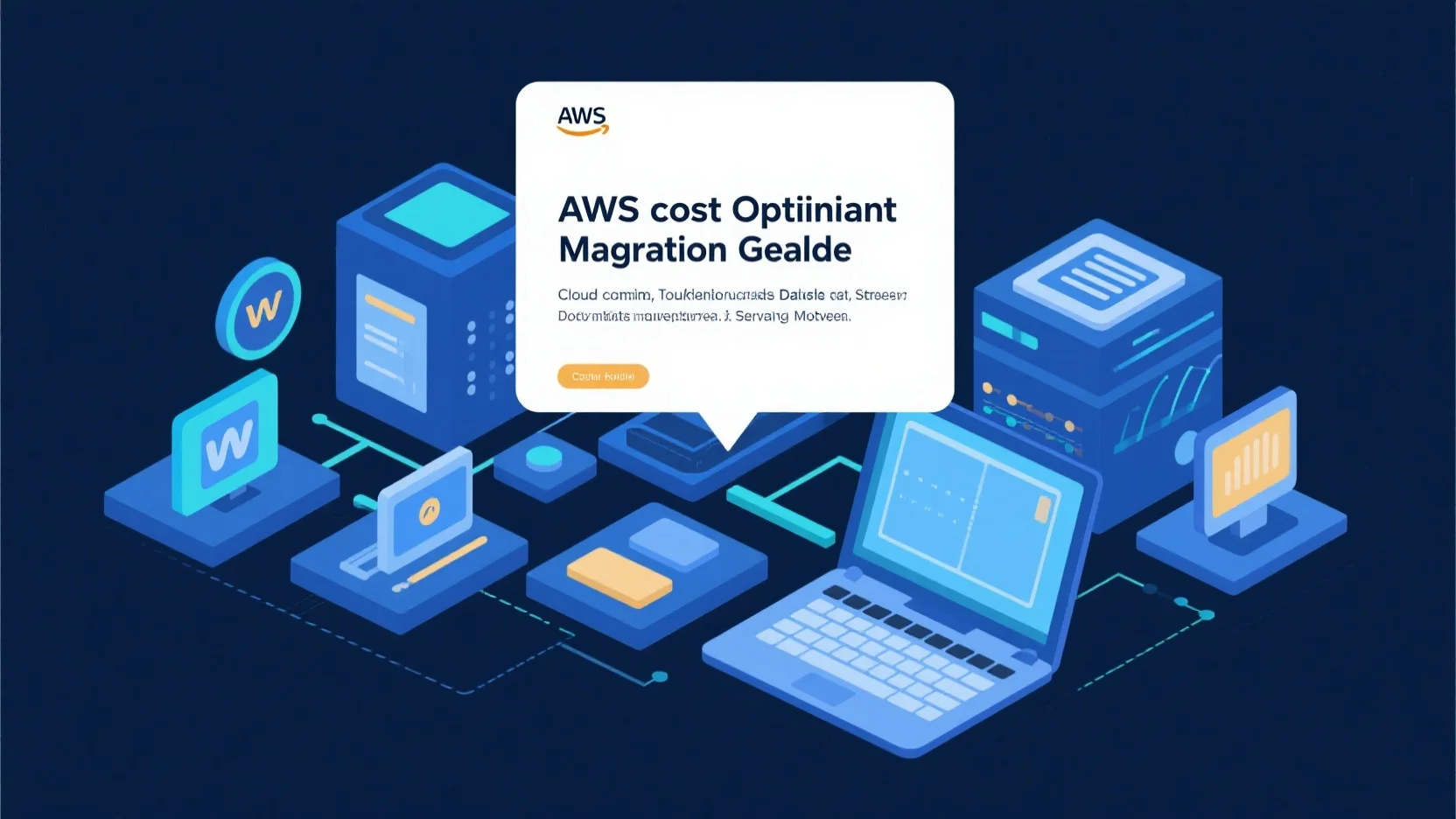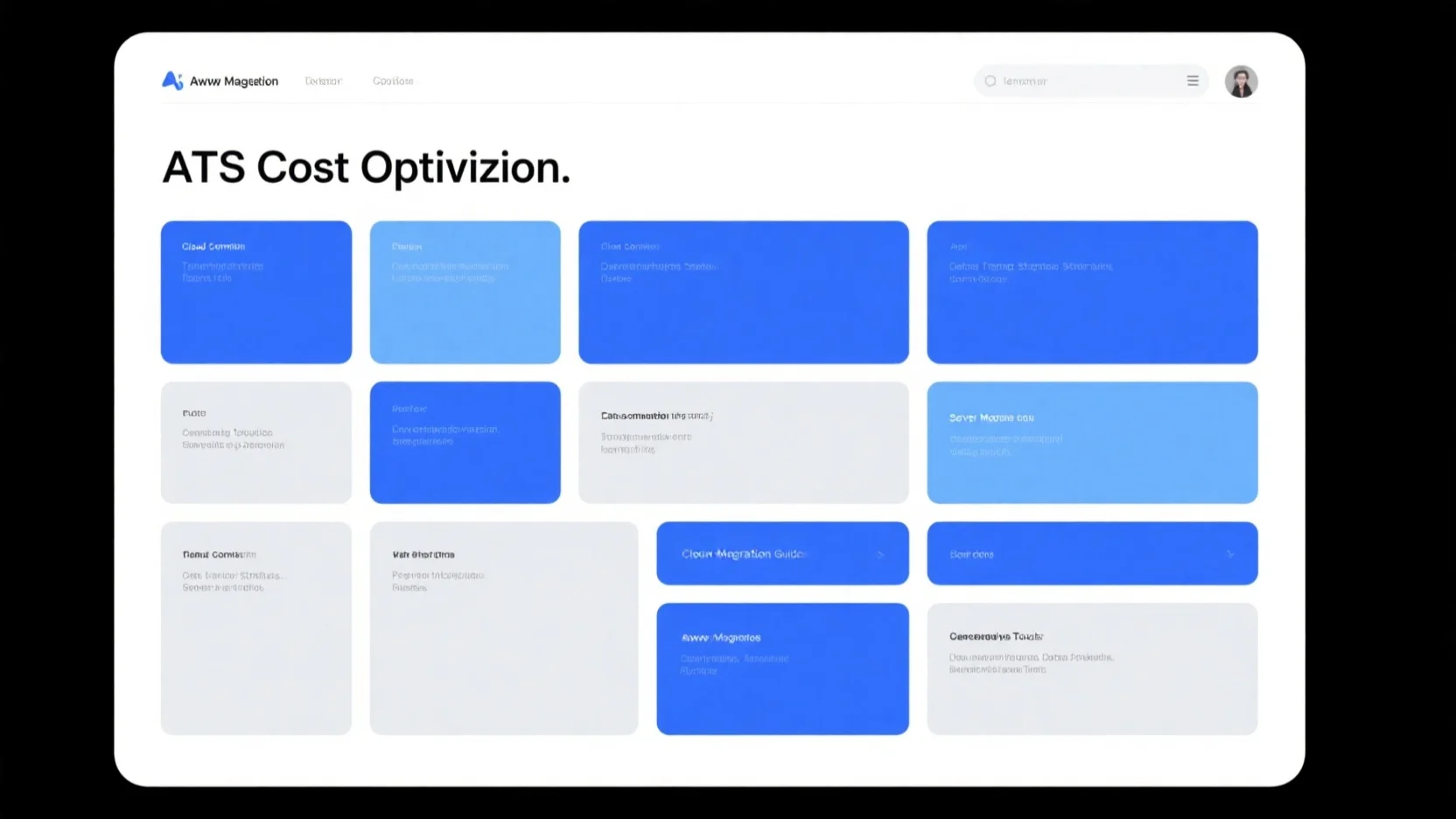Image Source: unsplash
More businesses are learning how to migrate to AWS: a step-by-step cloud migration guide for its strong cloud tools. AWS has many perks, like saving money with pay-as-you-go and being flexible for changing needs. Big companies like Netflix and Facebook use AWS because it is reliable and creative. A clear migration plan keeps data safe, reduces downtime, and uses resources well, making the move easy and successful.
Key Takeaways
- Learn the 7 R’s of AWS migration: Retire, Retain, Rehost, Relocate, Repurchase, Replatform, and Refactor. These steps help you plan based on your needs.
- Make clear goals for your migration. Goals like saving money or working faster keep you focused and show progress.
- Use AWS tools like Migration Hub and Database Migration Service to make migration easier. These tools help with tasks, track progress, and keep data safe.
AWS Migration Strategies
The 7 R’s of AWS Migration
The "7 R’s" of AWS migration help businesses move to the cloud. Each method fits different needs, making migration smooth and effective:
- Retire: Old or unused apps can be removed. This saves money and makes IT simpler.
- Retain: Some apps may not be ready to move. Keeping them as they are allows migration later.
- Rehost: Also called "Lift and Shift," this moves apps to AWS without big changes. It’s fast and easy.
- Relocate: This moves workloads with little trouble, keeping things running smoothly.
- Repurchase: Replace current apps with third-party services to reduce team workload.
- Replatform: Small changes are made to apps to use AWS features better.
- Refactor: Apps needing big updates are redesigned to fully use AWS tools.
These strategies help businesses match their migration plan to their goals and needs.
Picking the Right Strategy for Your Business
Choosing the best AWS migration plan depends on many things. Businesses should think about their needs to make migration work well. Important steps include:

- Checking what apps and business needs fit each strategy.
- Knowing goals like saving money, growing, or improving performance.
- Deciding which apps or tasks will move to AWS.
- Looking at the current IT setup for problems or links.
- Thinking about costs and rules to match company policies.
Good planning helps migration match business goals and lowers risks. A clear process makes it easier to follow how to migrate to AWS: a step-by-step cloud migration guide.
Planning Your AWS Migration
Checking Your Current IT Setup
Before moving to AWS, check your current IT system carefully. This helps find problems and makes the move easier. Common issues include:
- Service breaks, which happen to about 40% of businesses during moves.
- Spending too much on cloud services, as 70% of businesses report.
- Extra costs, like surprise fees when moving to a new house.
To avoid these problems, use tools like Migration Evaluator to study workloads and predict costs. The AWS Application Discovery Service collects data about your systems, and the AWS Pricing Calculator shows cost savings. These tools give helpful information to prepare well.
Setting Migration Goals
Clear goals help guide the move and match business needs. Common goals are cutting costs, growing easily, and making systems safer. Many also want better performance and stronger rules for safety.
Setting specific targets, like saving a certain amount or faster app speeds, helps measure success. These goals keep businesses on track during the migration.
Making a Migration Plan
A good plan is key for a smooth move. Important steps include:
- Involving key people and keeping communication open.
- Testing carefully to avoid problems and ensure quality.
- Improving systems after the move for better results.
- Updating processes to meet future needs.
Also, review your current setup and pick the best migration method. A strong plan lowers risks and makes moving to AWS easier.
Setting Up Your AWS Environment
Setting Up an AWS Account
Creating an AWS account is the first step to start. Follow these simple steps:
- Create an AWS Account: Sign up if you don’t have one yet.
- Set Up IAM: Use AWS Identity and Access Management (IAM) to make users, groups, and roles with the right permissions.
- Establish Networking: Set up Amazon Virtual Private Cloud (VPC), subnets, and security groups to control network traffic.
- Configure Storage: Choose AWS storage like Amazon S3, Amazon EBS, or Amazon FSx based on your data needs.
These steps help make migration safe and smooth.
Configuring Identity and Access Management (IAM)
IAM helps keep AWS resources secure. Follow these tips:
- Don’t use root user credentials for daily tasks.
- Give permissions to groups, not individual users.
- Use least privilege access to lower security risks.
- Turn on multi-factor authentication (MFA) for all users.
- Check permissions often to match current needs.
Tip: Review IAM settings every three months to find and fix issues.
Establishing Networking and Security Configurations
Good networking and security setups are key for migration. Keep these in mind:
- Use encryption and access controls to protect important data.
- Apply least privilege access rules to limit risks.
- Create a security plan to guide migration steps.
- Add regular security checks during the migration process.
A clear plan ensures security rules are followed, reducing risks before and after migration.
Executing the Migration Process
Moving Data to AWS
Moving data to AWS needs the right method. The choice depends on data size and type. Big datasets can be tricky, but AWS has solutions:
- Offline Migration: Use AWS Snowball or AWS Snowmobile for large data. These tools move data fast and safely when networks can’t handle it.
- Online Migration: AWS VPN makes secure connections. AWS Database Migration Service helps move databases easily. AWS S3 Transfer Acceleration speeds up uploads to Amazon S3.
- AWS DataSync: This tool moves data automatically from local storage to AWS. It saves time and makes transfers faster.
Picking the right method keeps data safe and reduces downtime.
Moving Applications to AWS
Moving apps to AWS needs solving some problems for smooth work:
- Resiliency for Compute and Networking Resources: Apps must stay available and strong during and after the move.
- Log Analysis and Metric Collection: Change logging and monitoring to fit AWS’s system.
- Managing Your Costs: Set clear goals to track costs and avoid surprises.
A planned app move lowers risks and keeps performance high in AWS.
Testing and Checking the Move
Testing and checking are important for a good AWS move. Key steps include:
- Testing Applications: Make sure all apps work well in AWS.
- Performance Monitoring: Use AWS CloudWatch to check app and system performance.
- Security Audits: Do a full security check to meet rules and standards.
These steps find and fix problems early, making the move to AWS smooth.
AWS Migration Tools and Services
AWS Migration Hub
AWS Migration Hub makes moving to AWS easier. It gives a single place to manage and watch migration tasks. Key features include:
- Centralized Dashboard: See progress and find problems in one spot.
- Application Discovery: Find and track apps on local or virtual systems.
- Migration Tracking: Get live updates on resources and any issues.
- Integration with AWS Services: Works well with AWS tools and other software.
- Custom Migration Tracking: Use APIs to build tracking tools for special needs.
These features make AWS Migration Hub a helpful tool for businesses learning how to migrate to AWS: a step-by-step cloud migration guide.
AWS Database Migration Service (DMS)
AWS Database Migration Service (DMS) helps move databases easily and reliably. It works for both same-type moves (like Oracle to Oracle) and different-type moves (like SQL Server to MySQL).
- DMS keeps the original database running during the move.
- Change Data Capture (CDC) syncs data almost instantly, keeping things up-to-date.
- Built-in checks and error fixes make it more dependable.
DMS also supports ongoing data updates for reports or backups. This makes it a great tool for database moves.
AWS Snowball and Snowmobile
AWS Snowball and Snowmobile help move big data to AWS. Their uses and sizes are shown below:
| Service | Best Use Case | Capacity |
|---|---|---|
| AWS Snowmobile | Moving huge data sets of 10PB or more from one place | 10PB or more |
| AWS Snowball | Moving smaller data sets under 10PB or from many places | Less than 10PB |
These tools solve problems like slow networks and high transfer costs. They make data moves safe and fast.
Best Practices for AWS Migration
Keeping Data Safe and Following Rules
Security is very important when moving to AWS. Companies need to switch from old security methods to a layered approach. This means using many security tools together to protect data better and stop threats faster.
To keep the migration safe, companies should:
- Plan security needs and rules before starting.
- Use a strong security plan to guide the move.
- Check security and rules often during the process.
Using the AWS Well-Architected Framework helps follow best practices and stay secure. A shared responsibility model explains who does what, keeping data safe during and after the move.
Tip: Check security settings often to handle new risks and rules.
Saving Money During and After the Move
Saving money is key for a good AWS migration. Companies can use AWS cost tools to watch spending all the time. Picking the right resource size avoids wasting money or running out of power.
Other ways to save include:
- Using auto-scaling to change resources based on need.
- Choosing managed services like AWS Lambda to lower costs.
- Picking the right S3 storage type for how data is used.
- Sorting data into hot, warm, or cold groups by how often it’s needed.
These tips help companies save money while getting the most from AWS.
Watching and Improving Performance
Watching and improving AWS performance keeps things running well. Amazon CloudWatch tracks data, watches logs, and sets alerts to fix problems early. AWS CloudTrail records user actions for checking and following rules.
Other helpful tools are:
- BetterStack: Finds problems fast with real-time logs and alerts.
- SolarWinds AppOptics: Tracks performance with easy-to-read maps.
- AWS Inspector: Checks apps for weak spots and rule-following.
Using these tools helps companies keep systems strong and fix issues quickly.
Note: Regular checks find ways to improve and ensure success over time.
Moving to AWS has four main steps: check readiness, set up infrastructure, move data, and improve operations. Companies get lasting benefits like better performance, quicker ideas, and fewer risks. For instance, Rappi improved its system by 90% and handles 25 million orders each month. Beginning this process helps businesses stay flexible and grow in the future.
FAQ
What should you do first when moving to AWS?
Start by checking your current IT setup. This helps find tasks, links, and problems before planning the move.
How can companies keep data safe during the move?
Use encryption and access controls to protect data. AWS tools like IAM and CloudTrail help too. Regular checks and following rules make security stronger.
What AWS tools make migration easier?
AWS Migration Hub, DMS, and Snowball help with the move. They manage tasks, move databases, and handle big data transfers.
Tip: Use the AWS Well-Architected Framework to follow best practices for migration.





